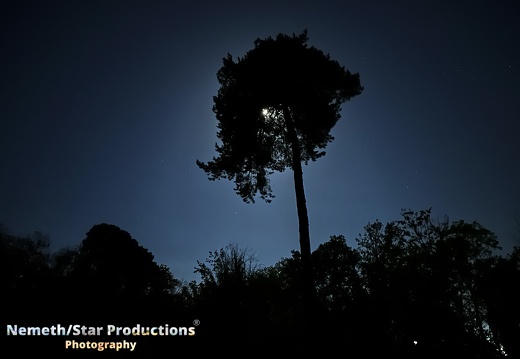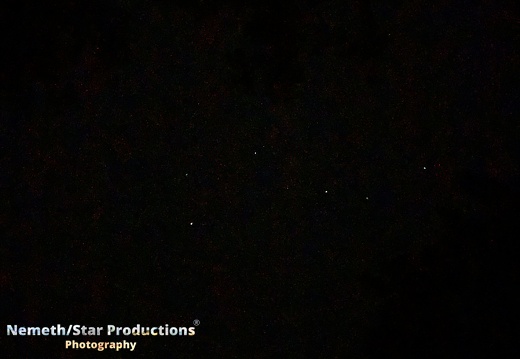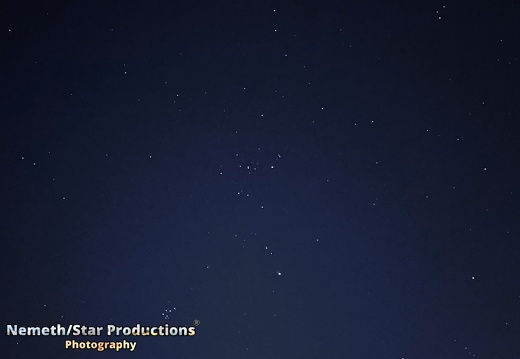
EP01 - Stargazing Frankfurt - Kleine Bürgerwiese 2022
Get ready for a breathtaking experience with the first episode of SPACE-FRIDAY: PHOTOGRAPHY in 2023. This week, we're showcasing stunning photos captured with the iPhone 14 Pro and its incredible features and supporting apps. Under the light of a full moon, marvel at the sights of Jupiter, Neptune, and a plethora of stars and celestial bodies, including Al Naymat I, Dheneb, Diphda, the southern Taurids, Uranus, the Pleiades, Hassaleh, Bellatrix, Mars, Cassiopeia, Perseus, Andromeda, Pegasus, Eris, Aldebaran, and Hyadum III. Join us for this visual journey at Kleine Bürgerwiese in Frankfurt Niederrad.
As in our other documentary productions we count on the technology of the iPhone and this is how the iPhone 14Pro with the NightMode, NightSky and NightCap app makes astrophotography. We use the following apps to support our astrophotography: iPhone NightMode, NightSky, Stellarium, Sky Guide and NightCap.

EP02 - Stargazing Frankfurt - Rennbahn Park
Discover the enchanting beauty of Rennbahn Park in Frankfurt, Niederrad, where nature meets the starry sky. This citizens' park, built on a former horse racecourse, features a preserved golf course and small lake, making it the ideal retreat for nature-based recreation. And at night, the sky comes alive with stars like Alcor, Aliath, Megrez, Phecda, Merak, Dubhe, Vega, Deneb, Capella, Shedar, and Atik. With stunning photos capturing these celestial wonders, Rennbahn Park is the perfect destination for stargazing and unforgettable moments under the stars. As in our other documentary productions we count on the technology of the iPhone and this is how the iPhone 14Pro / iPhone Xs with the NightMode, NightSky and NightCap app makes astrophotography. We use the following apps to support our astrophotography: iPhone NightMode, NightSky, Stellarium, Sky Guide and NightCap.

EP03 - Carl von Weinberg Park, Frankfurt
Tonight, we find ourselves at Carl von Weinberg Park, located on the outskirts of the City Forest in the southern part of Frankfurt. Under the clear skies, we are treated to a breathtaking view of the stars, accompanied by the graceful passage of an airplane. Among the constellations visible tonight are Ursa Minor, showcasing the stars Kochab and Pherkad, Draco with its prominent stars Aldhibah, Chi Draconis A, Altais, and Rastaban ; Cepheus featuring Iota Cephei ; Cassiopeia adorned by Epsilon Cassiopeiae, Ruchbah, Navi, and Shedir ; Auriga showcasing Alkaid, Phad, Merak, and Menkalinan ; Ursa Major boasting the stars Merak, Dubhe, Alioth, Mizar, and Alkaid ; Perseus displaying Mirphak and Algol, and lastly, Aries shining brightly with Hamal and Sheratan. As in our other documentary productions we count on the technology of the iPhone and this is how the iPhone 14Pro / iPhone Xs with the NightMode, NightSky and NightCap app makes astrophotography. We use the following apps to support our astrophotography: iPhone NightMode, NightSky, Stellarium, Sky Guide and NightCap.

EP04 - Moon above Frankfurt
Experience the beauty of the moon over Frankfurt with stunning pictures showcasing the moon's majestic landscapes and a glimpse of nature with trees in the foreground. These breathtaking images are a must-see for anyone who loves astronomy and nature photography. As in our other documentary productions we count on the technology of the iPhone and this is how the iPhone 14Pro / iPhone Xs with the NightMode, NightSky and NightCap app makes astrophotography. We use the following apps to support our astrophotography: iPhone NightMode, NightSky, Stellarium, Sky Guide and NightCap.

EP05 - EUMETSAT
Welcome to the EUMETSAT control center in Darmstadt, Germany. Here the EUMETSAT team controls 9 different weather satellites. The satellites - mostly launched by the European Space Agency's Ariane Program or via other rocket launchers like Space X - delivered Petabytes of weather data to the EUMESAT control center in the recent years. The raw-data is been stored in Darmstadt and provided to weather facilities and services around the world for free. EUMETSAT Satellite Application Facilities (SAFs), also aggregate specific data for weather facilities and services and scientific research at additional costs. But primarily the data is free. EUMETSAT is finance by European tax money of it's 30 member states. Currently Germany, the UK, France and Italy are biggest contributes to EUMETSAT. The short-term EUMETSAT stands for "**Eu**ropean Organisation for the Exploitation of **Met**eorological **Sat**ellites".
Today weather satellites can measure all kinds of weather related data like Air pressure, light wave lengths, dust, clouds, smoke, atmospheric gases, aerosols, Ocean currents, Greenhouse gases and observes phenomena such as El Niño.
The satellites cover almost the whole world - from the equatorial region's till the the poles and circle the earth once in 90 minutes. The weather data is also widely used by African countries to create weather forecasts or to investigate the impact of climate change on the continent.
Today we show you different models to satellites and you can get a look into the control room. The Sentinel-3 satellites of the Copernicus program, the Metop satellites and all other satellite models outside of the EUMETSAT building are 1:1 size-models. All other satellite models inside the building are mostly 1:4 size-models.
The Copernicus program of the European Space Agency and the the European Commission observes Oceans, land and ice masses, and the Earth's atmosphere.
The Metop satellites built the space segment of the EUMETSAT Polar Systems. Their instruments are used to observe the Earth's atmosphere, land masses and oceans. Their data are of crucial importance for the weather forecast of up to 10 days as well as for the climate observation.
The Meteosat 3rd Generation imaging satellites provide very frequent and high-resolution imagery enabling now-casting of fast developing, high-impact weather. The ability to detect severe weather at an early stage combined with the new ability to map lightning, activity will help protect lives, property and infrastructure.
This episode is published under CC-BY 4.0
Please credit as follows
Photo: Sven Nemeth
Published by: Nemeth/Star Productions (https://nemethstarproductions.eu)

EP06 - Stargazing Buccleuch
Africa's night sky is one of the most beautiful's in the world. Today we are in Buccleuch, in the North of Johannesburg with our best stargazing episode ever. Surrounded by trees we have a beautiful look to the stars. We can see the clear constellations of Southern Cross (Crux) (with Acrux, Hadar), Triangulum Australe (Beta Trianguli Australis), Centaurus (with Alpha Centauri, Epsilon Centauri), Orion (with Rigel, Betelgeuse, Cursa), Canis Major (with Sirius, Mirzam, Adhara) and Puppis (with Naos). We can also see Mars, Uranus and the Pleiades tonight. Enjoy this episode which is a groundbreaking for us.
As in our other documentary productions we count on the technology of the iPhone and this is how the iPhone 14Pro / iPhone Xs with the NightMode, NightSky and NightCap app makes astrophotography. We use the following apps to support our astrophotography: iPhone NightMode, NightSky, Stellarium, Sky Guide and NightCap.

EP07 - Stargazing Cape Town CBD
We’re in Cape Town’s city center, South Africa, immersed in a night where Asteroid 2023BU brushes past Earth. The city’s clear night sky provides a perfect backdrop to photograph the cosmos. Our gaze captures Aldebaran, alongside the planets Mars and Uranus, as well as the captivating Pleiades star cluster. Additionally, the constellation Auriga, adorned by Capella, Hassaleh, and Elnath, graces our view.
As in our other documentary productions we count on the technology of the iPhone and this is how the iPhone 14Pro / iPhone Xs with the NightMode, NightSky and NightCap app makes astrophotography. We use the following apps to support our astrophotography: iPhone NightMode, NightSky, Stellarium, Sky Guide and NightCap.

EP08 - Entoto Mountain Observatory
In this season finale, we travel back to early 2015 when we had the unique opportunity to visit Ethiopia’s first science observatory, the “Entoto Observatory Space Science Research Center (EORC),” located on Entoto Mountain, 15 kilometers north of Addis Ababa.
The observatory, initiated in 2012 by the Ethiopian Space Science Society (ESSS), officially began scientific operations in early 2015. It features twin 1-meter telescopes and, since May 2021, a 7.3-meter multi-satellite ground station. This ground station provides high-resolution images for various space applications, benefiting Ethiopia and the countries of the East African region in areas like agriculture, water management, urban planning and cadastral mapping.
Funding for the observatory comes from a consortium of universities, ESSS, and the Ethiopian government. Future plans include establishing observatories in Lalibela and other towns, further advancing Ethiopian astronomy and supporting the East African region.
Transparency note: The material for this episode was produced in January 2015 and did not receive support from the Ethiopian government.
This episode is published under CC-BY 4.0
Please credit as follows
Photo: Sven Nemeth
Published by: Nemeth/Star Productions (https://nemethstarproductions.eu)








